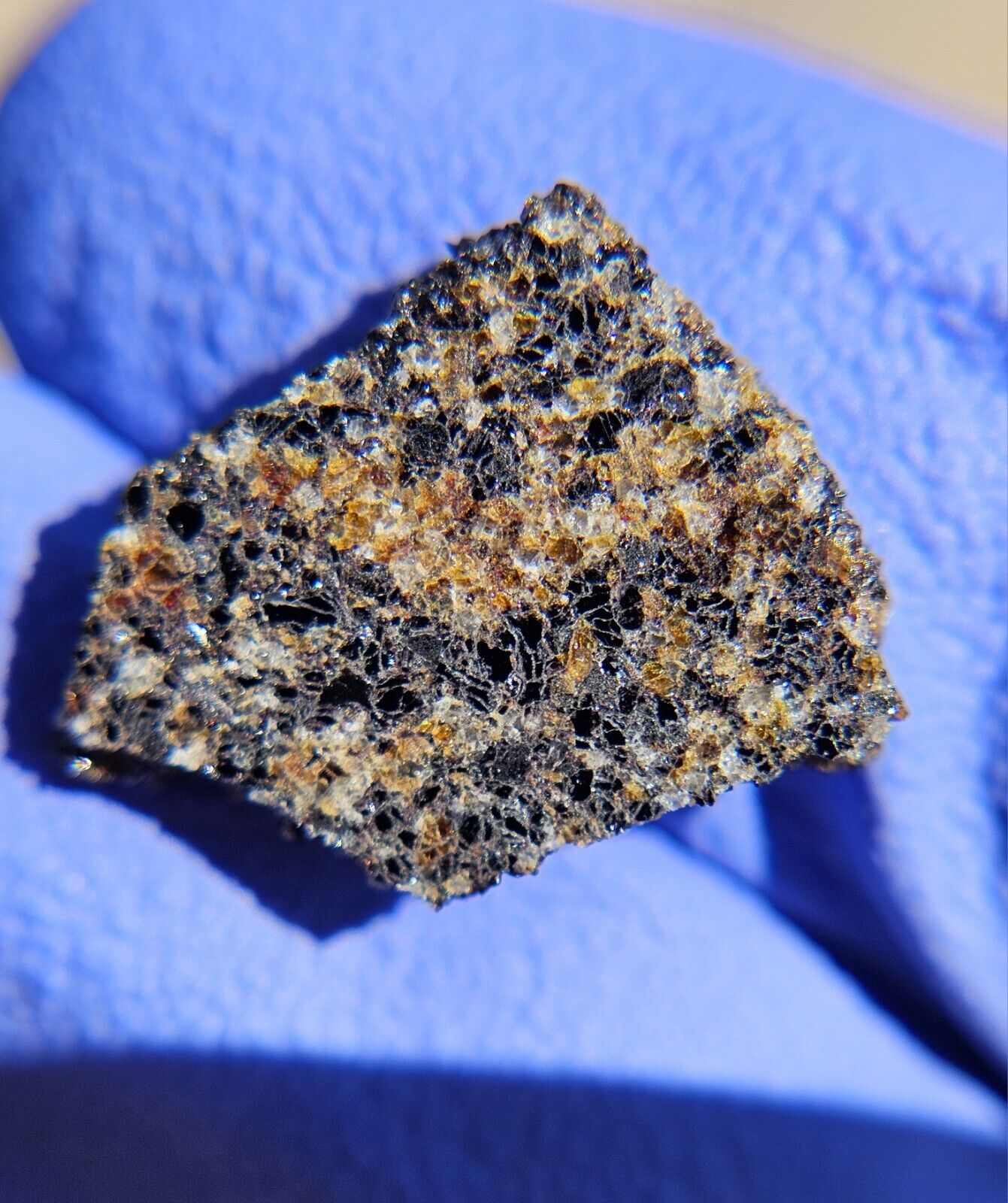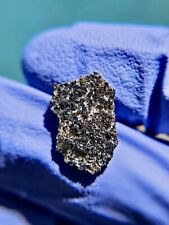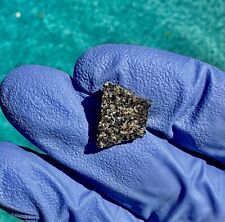|

On eBay Now...
Meteorite**Fezzou 002, Angrite**1.039 gram slice (allotriomorphic-granular) Rare For Sale

When you click on links to various merchants on this site and make a purchase, this can result in this site earning a commission. Affiliate programs and affiliations include, but are not limited to, the eBay Partner Network.

Meteorite**Fezzou 002, Angrite**1.039 gram slice (allotriomorphic-granular) Rare:
$180.00
This rare and unique meteorite known as Fezzou 002 is classified as an extremely rare Angrite (allotriomorphic-granular). This particular slice weighs 1.039 grams and has a perfect shape!! The specimen is an aggregate (mean grainsize ~350 µm) of interlocking anhedral grains exhibiting an allotriomorphic-granular texture. Composed predominantly of Al-Ti-augite (pink in thin section), Ca-bearing olivine, kirschsteinite, and almost pure anorthite together with accessory hercynitic spinel (pleonaste), troilite and rare Fe metal. Blades or lamellae of kirschsteinite are present within some olivine grains. Some polycrystalline pyroxene-rich clusters and clusters of kirschsteinite+olivine up to ~3 mm in size are present. Vesicles are absent.
Angrites are olivine-bearing, basaltic meteorites that originate from a volatile-depleted planetesimal. Previous work on angrites suggests that their parent body accreted within the first 0.5 to 1 Myr of solar system evolution and differentiated via extensive melting and crystallization of igneous rocks within ~2 Myr after the first solids formed (~4.57 billion years ago). Petrologic studies indicate that angrites experienced little physical or chemical alteration after crystallizing. Consequently, angrites are the oldest known igneous rocks, preserving records of early solar system chronology and planetary formation, melting, and differentiation. Name: Fezzou 002 Abbreviation: There is no official abbreviation for this meteorite. Observed fall: No Year found: 2023 Country: Morocco Mass: 12.37 kg
Fezzou 30.794°N, 4.861°W
Centre-South, Morocco
Find: 2023 Sep
Classification: Angrite
History: Found in September 2023 in eastern Morocco near the village of Lahfira at 30.794°N, 4.861°W and subsequently purchased from the finder by Mark Lyon.
Physical characteristics: A single broken stone in two pieces (11340 and 1028 g) with a thin coating of vesicular black fusion crust.
Petrography: (A. Irving, UWS, and P. Carpenter, WUSL) The specimen is an aggregate (mean grainsize ~350 µm) of interlocking anhedral grains exhibiting an allotriomorphic-granular texture. Composed predominantly of Al-Ti-augite (pink in thin section), Ca-bearing olivine, kirschsteinite, and almost pure anorthite together with accessory hercynitic spinel (pleonaste), troilite and rare Fe metal. Blades or lamellae of kirschsteinite are present within some olivine grains. Some polycrystalline pyroxene-rich clusters and clusters of kirschsteinite+olivine up to ~3 mm in size are present. Vesicles are absent.
Geochemistry: Al-Ti-augite (Fs16.3-17.9Wo56.2-57.8, FeO/MnO = 77-101, Al2O3 10.1-11.4 wt.%, TiO2 1.5-2.8 wt.%, N = 5), olivine (Fa59.4-60.5Ln2.4-3.2, FeO/MnO = 61-68, N = 4), kirschsteinite (Fa37.7-39.3Ln45.0-48.1, FeO/MnO = 59-65, N = 4), anorthite (An99.9-100.0Or0.0, N = 4), pleonaste [Fe0.78Mg0.30Al1.88 Ti0.02Cr0.04O4]. Oxygen isotopes (K. Ziegler, UNM): analyses of acid-washed subsamples by laser fluorination gave, respectively δ17O 2.217, 2.194, 2.137; δ18O 4.444, 4.350, 4.239; Δ17O -0.130, -0.103, -0.101 per mil (all data linearized, TFL slope = 0.528).
Data from: MB113 Table 0 Line 0: Place of purchase:Morocco Date:2023 Sep Mass (g):12368 Pieces:2 Class:Angrite Shock stage:low Weathering grade:low Fayalite (mol%):59.4-60.5 Ferrosilite (mol%):16.3-17.9 Wollastonite (mol%):56.2-57.8 Classifier:A. Irving, UWS, and P. Carpenter, WUSL Type spec mass (g):34.5 Type spec location:UWB Main mass:M. Lyon Comments:Work name JC23-8; submitted by A. Irving Angrites are a rare group of meteorites that are named for the Angra dos Reis meteorite that fell in Brazil in 1869. These meteorites formed early in the Solar System’s history, and with an estimated age of 4.56 billion years, they are the oldest known igneous rocks. Initially, only a small number of angrite samples were available. Because of the small sample size, researchers struggled to identify their parent body (the original asteroid, comet, or other source from which the small meteorite pieces came from). Studying ancient bodies like this can help astrobiologists piece together how the planets in our system formed, and the conditions that could have helped Earth become habitable for life as we know it. For instance, previous studies have suggested that the parent body of the angrites could have delivered important materials like water to the early Earth.


Meteorite**Fezzou 002, Angrite**1.039 gram slice (allotriomorphic-granular) Rare $180.00

meteorite:Fezzou002::Weight 0.960grams: Extremely Rare Type $260.00

meteorite:Fezzou002::Weight 0.854 grams: Extremely Rare Type $200.00
|